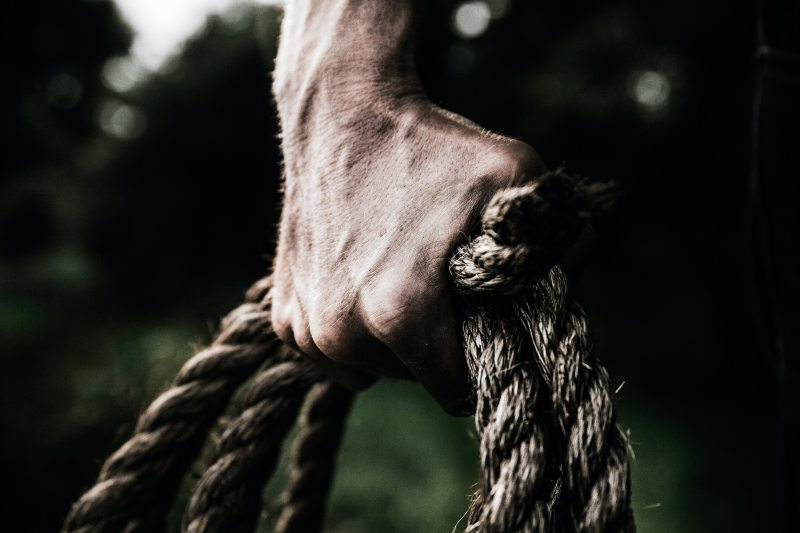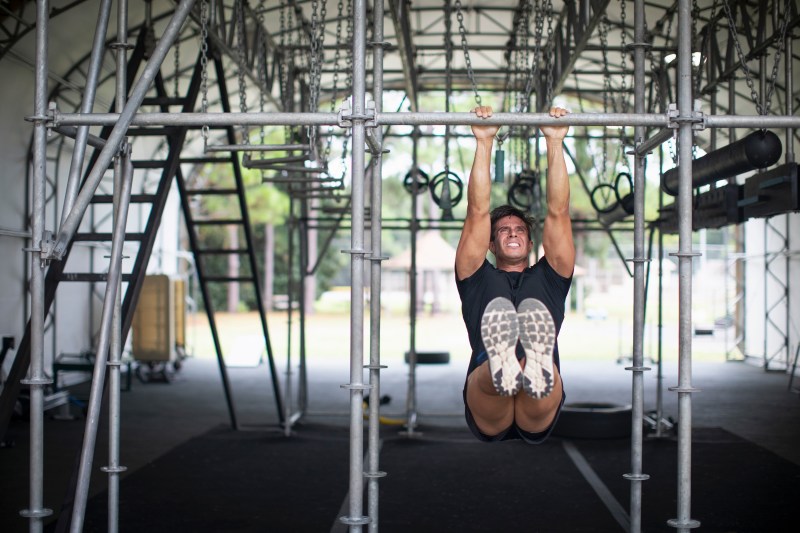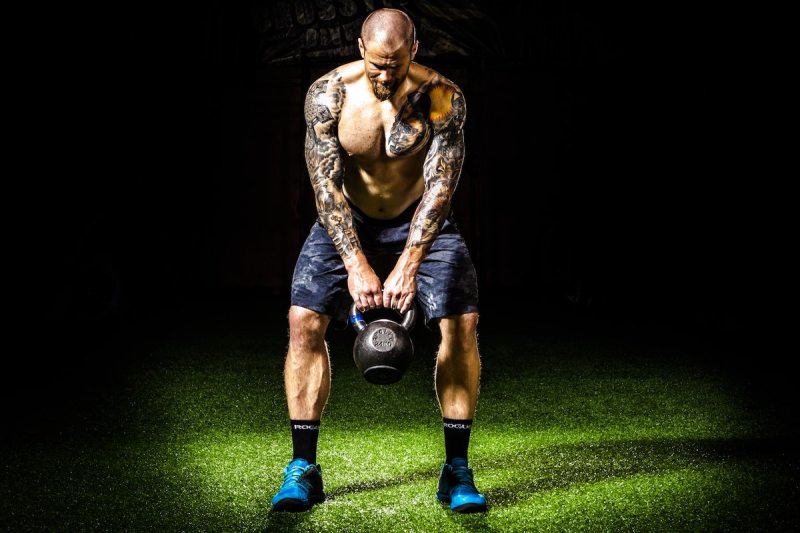Strengthening your grip is just as important as strengthening your biceps, triceps, core, and other muscle groups. Your grip strength refers to how securely and firmly you can hold and grip onto things, especially heavier items. Lifting heavy weights in the gym requires solid grip strength to achieve your maximum potential. Read on to find out why it’s important and how to build grip strength through certain exercises to fire up those intricate muscles in your hands, wrists, and forearms.
Why is grip strength important?

Grip strength helps you function in your everyday life, and you use your hands for many of your daily tasks, such as writing with a pen, buttoning your shirt, eating with a fork, and carrying a child. You also rely on your grip strength for numerous sports and activities, from tennis to rock climbing. These tasks require a certain degree of dexterity and strength in your hands and fingers.
Research shows that grip strength is a strong predictor of overall muscle strength and endurance, and it’s been associated with various health indicators, such as mobility and bone mineral density. If your muscles are weaker, you have a higher risk of falls and fractures.
One study found that men with a grip strength of less than 82 pounds had more mobility issues. For women, that number was 46. The researchers discovered a relationship between walking or climbing stairs and grip strength. Another study revealed that grip strength was an accurate predictor of cognitive function.
Grip strength and your immune system

Research suggests that poor grip strength indicates a weaker immune system. When your body loses muscle mass, you also lose some of your ability to mount an immune response to bacteria and viruses.
The three main types of grip strength

You can work on improving the three main types of grip strength:
- Support — Support involves how long you can hang from something, such as during a dead hang or how long you can hold on to something.
- Crush — Your crush grip refers to how powerful your grip is when using your fingers and the palm of your hand.
- Pinch — Your pinching grip strength refers to how firmly you can pinch something between your fingers and thumb.
How do you measure your grip strength?

You can have your grip strength measured in a gym or doctor’s office. You can also purchase a dynamometer — a handheld device you squeeze as hard as you can.
Measure both hands to determine the difference in grip strength between your dominant and non-dominant hand. Keep in mind your measurement can vary based on factors like your energy level or how much you’ve been using your hands that day.
What’s the average grip strength for men?

The dynamometer manual has a table listing the high, average, and low grip strengths for your age and sex. An Australian study reported the average grip strength measurements for men aged 20 to 29 was 99 pounds for the left hand and 103 pounds for the right hand. These numbers stayed pretty much the same until they started to decline after age 50. The average grip strength measurement for men aged 60 to 69 was 83 pounds for the left hand and 88 pounds for the right hand.
Men who are building muscle by strength training usually have higher numbers. For example, a grip strength of 200 pounds would be a sign of progress in weightlifting.
How do you train your grip strength?

These top tips will help you train your grip:
- Squeeze your fist on your non-working hand when performing moves like the one-arm dumbbell row.
- Squeeze the bar tightly in your hands when you’re picking up a weight.
- Some barbells or dumbbells have thicker handles that are more difficult to grip.
- Practice pullups, dead hangs, and other exercises that rely on your grip strength to complete the full range of motion.
What muscles should you target to improve grip strength?

You’ll need to target the following muscles in your hands, wrists, and forearms, including your:
Forearm extensors
These muscles on the back of your forearm help you extend your wrists backward and spread your fingers (think jazz hands). You can train them by spreading your hands wide while bending your wrists back. Hold the move for 30 seconds before resting and repeating.
Forearm flexors
On the same side as your little finger, you have muscles in your lower arm that help you grab and grip. You can perform wrist curls and other moves to work these muscles.
Thenar muscles
Your thenar muscles allow you to pinch your thumb toward your fingers. Performing plate pinches is one of the best ways to work these muscles.
The best exercises to build grip strength

Amplifying your crushing power requires performing the right exercises. Read on for some of the most effective exercises to add to your workout routine to develop enviable pinching, crushing, and lifting power in the palms of your hands.
The farmer’s carry

The sport of strongman regularly includes the farmer’s carry or the farmer’s walk because it provides many benefits for your core and grip strength, posture, balance, and coordination. You’ll merge cardio with strength training as you hold heavy loads at your sides and walk forward. Most people perform farmer’s carries using two dumbbells, kettlebells, farmer’s carry handles, or two barbells loaded with weight plates. You can work one side or both sides at the same time.
How to do the farmer’s carry:
- Stand holding two dumbbells or kettlebells with your arms straight down by your sides.
- Engage your core and try to make sure you have a firm grip.
- Walk forward for the designated distance with the weights in hand.
- Try to maintain a steady, upright posture while walking, and don’t let the weights move around. Keep your weight evenly distributed on both sides and use short, brisk strides.
Grip strengtheners

Grip strengtheners refer to small hand gripper tools you can practice gripping with. You can also squeeze a stress ball or tennis ball. These small hand gripper tools and stress balls are a great choice when you’re on the go because you can take them with you and practice more often in different places. Your gripping muscles recover more quickly compared to other muscle groups, so you can work them more often if you’d like.
Thicker bar lifts

Of course, lifting involves gripping and holding on to the weights to complete the full range of motion. You can make your forearm muscles work harder when you’re lifting by using a thicker barbell or wrapping a towel around the bar. For the best results, try to include kettlebell swings, thicker bar lifts, dead hangs, and a variety of exercises in your training schedule.
Dead hang

The dead hang doesn’t just improve your grip strength; you’ll also stretch your upper body, decompress your spine, and enhance your shoulder mobility. You can gradually build your tolerance by increasing the time you hang from the bar.
How to do a dead hang:
- Grip a secure overhead bar with an overhand grip. Your palms should be facing away from you in the starting position.
- Engage your core and lift your feet up off the bench or step so you’re hanging from the bar and holding your entire body weight up off the ground.
- Keep your arms straight.
- Hang for 10 to 60 seconds.
- Slowly bring your feet back to the ground, step, or bench in the starting position.
Pinch grip transfer

You’ll need one weight plate that’s at least 10 pounds for this exercise. As the name implies, the pinch grip transfer helps you strengthen your pinching grip.
How to do the pinch grip transfer:
- Start standing upright with your arms down at your sides and hold the weight plate in one hand. Pinch the edge of the weight plate between your fingers and thumb in the starting position.
- Try to maintain the pinch grip while lifting the weight out in front of you and straightening your arm.
- Transfer the weight plate from one hand to the other using the same pinch grip. You’ll need to remove one hand from the weight plate while simultaneously grabbing it with the other hand and keeping it in the same position with your arm extended out in front of you.
- Now that you’ve transferred the weight to the other side, lower both arms back down to your sides.
- Repeat the movement on your other side.
- Generally speaking, you can aim for 3 sets of 10 reps every day or two.
Plate pinch

You’ll need two weight plates to complete the plate pinch. Each plate should weigh at least 10 pounds. If you only have one weight plate, you can perform the movement on one side. Just like the pinch grip transfer, the plate pinch is a killer workout for your pinching muscles.
How to do the plate pinch:
- Place two weight plates on the floor.
- Lean down, hinging forward at your hips to grab one weight plate in each hand.
- Pinch the weight plates between your fingers and thumbs to hold them at your sides. Your arms should be straight down by your sides in the starting position, and you should be bent forward.
- Squeeze your grip and carefully start to stand up while still pinching the plates. Keep your arms straight down by your sides.
- Hold the plates in this position for 10 seconds before carefully lowering the weights back down to the bent-forward starting position.
- Generally speaking, you can perform 3 sets of 5 to 10 reps of the plate pinch every day or two to really generate results.
Additional grip strength exercises

These additional grip strength moves are also worth trying:
- Kettlebell swings
- Deadlifts
- Reverse-grip barbell rows
- Hammer curls
- Skull crushers
- Pullups
- Chin-ups




